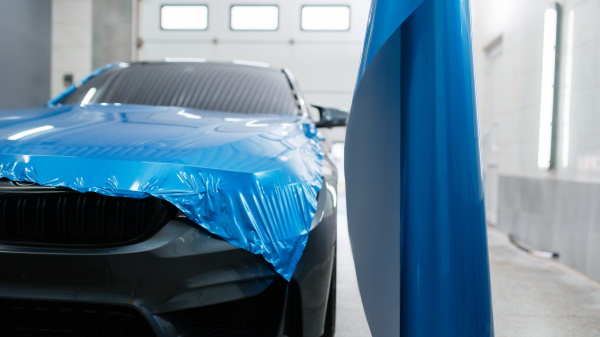Guarantee Maximum Longevity and Style with Tint Pros Vinyl Wraps Applications
Guarantee Maximum Longevity and Style with Tint Pros Vinyl Wraps Applications
Blog Article
The Ultimate Overview to Choosing the Right Vinyl Wraps for Your Job
Choosing the ideal vinyl cover for your job calls for a nuanced understanding of various factors that impact both aesthetic appeals and functionality. As you browse these considerations, it comes to be clear that the course to an effective plastic wrap task is layered with critical choices that warrant further expedition.

Kinds Of Vinyl Covers
When selecting plastic wraps, comprehending the different types readily available is necessary. Vinyl wraps can be broadly categorized right into 2 main types: cast vinyl and calendared vinyl. Cast vinyl is recognized for its superior high quality, versatility, and toughness, making it optimal for complex surfaces and long-term applications. It is generated by casting liquid plastic onto a movie, resulting in a thinner, a lot more conformable product that adheres well to contours and contours.
On the various other hand, calendared vinyl is produced by a procedure that entails rolling and extending plastic sheets. This type is usually thicker and cheaper than cast plastic, making it suitable for short-term applications and flat surfaces. While calendared vinyl provides a cost-efficient option, it might not execute also on complex designs or in severe weather condition conditions.
Furthermore, specialized plastic covers are readily available, consisting of metallic, matte, and distinctive coatings, which can improve aesthetic appeals while supplying distinct features. Comprehending these sorts of plastic covers will certainly enable you to make enlightened decisions based on your task needs, ensuring optimal lead to both appearance and longevity.
Choosing the Right Finish
Choosing the ideal finish for your vinyl wrap is a crucial element that can dramatically affect the general aesthetic and functionality of your project. Plastic covers been available in a range of finishes, each offering distinctive visual effects and efficiency qualities. The most typical coatings consist of gloss, matte, satin, and distinctive options.
A gloss coating gives a high-shine surface area that improves color vibrancy and depth, making it ideal for attractive layouts. Gloss coatings may be much more susceptible to finger prints and scratches. On the other hand, a matte finish uses a controlled and sophisticated appearance, decreasing glare and flaws. This coating is commonly chosen for an extra understated look however can be much less immune to dirt and spots.
Satin surfaces strike a balance in between matte and gloss, offering a soft luster that includes style without overwhelming the design. Distinctive coatings, such as brushed metal or carbon fiber, can include a distinct responsive component, improving the visual appeal of your job.
Inevitably, your selection of surface must align with the wanted visual and the atmosphere where the wrap will be applied. Consider toughness, upkeep, and the particular application to guarantee optimum results.
Setup Methods
Exactly how can you make sure a remarkable application of vinyl wraps? The vital depend on thorough prep work and method. Begin by cleaning up the surface area thoroughly to get rid of grease, dust, and wax, as any kind of deposit can jeopardize adhesion. A tidy, smooth surface is necessary for optimum results.
Following, collect necessary devices such as a warmth gun, squeegee, and utility blade. These devices will certainly help in using the plastic efficiently and cutting excess product. When using the cover, operate in areas, beginning with Our site one side and carefully spreading out the vinyl while using the squeegee to remove air bubbles.
Warm can be advantageous in this procedure; it makes the vinyl more pliable, enabling it to adapt to shapes and contours quickly. Workout patience and prevent hurrying, as this can lead to misalignment or bubbles. In cases of difficult locations, such as around edges or manages, take into consideration using a method called "tack and stretch" to create a seamless fit.

Maintenance Tips
To preserve the integrity and look of plastic covers, routine treatment is necessary. Begin by washing the covered surface with a mild soap service and a soft sponge or microfiber cloth. Prevent rough chemicals, as they can damage the plastic. Tint Pros Vinyl Wraps. It's best to wash your cover every 2 weeks to get rid of dirt, gunk, and impurities that can cause the wrap to lose its radiance.
Dry the surface extensively after cleaning, as water places can come to be permanent if entrusted to completely dry normally. For added security, take into Read Full Report consideration using a specialized vinyl cover sealant, which can aid keep the shade and prevent fading from UV exposure.
Additionally, avoid parking in straight sunlight for extensive periods, as extended direct exposure can bring about discoloration and degradation of the wrap. Ideally, utilize a cars and truck cover or park in shaded areas.
Regularly check the wrap for any type of indications of lifting or damages. If you notice any type of problems, address them quickly to avoid further deterioration. Following these upkeep ideas will certainly ensure that your plastic cover stays vivid and expands its life expectancy, inevitably improving the aesthetics of your job.

Common Errors to Avoid
When it comes to plastic wraps, preventing typical challenges can considerably influence both the application process and the longevity of the wrap. One frequent blunder is overlooking surface preparation. Appropriate cleansing and priming are vital to make certain that the vinyl adheres efficiently. Any type of dirt, grease, or old adhesive can cause premature training or bubbling.
Another common mistake is picking the incorrect kind of plastic for the certain application. Different jobs call for various materials; for example, a lorry cover ought to utilize cast vinyl for durability, while a temporary indicator might be appropriately served by calendared plastic.
Insufficient warm application during installation can additionally cause issues next such as wrinkles and incorrect adherence. Making use of a warm gun at the appropriate temperature is essential for collaborating with the vinyl, specifically in challenging locations like contours or sides.
Finally, neglecting post-installation treatment can shorten the life expectancy of the cover. Failing to follow maintenance standards, such as avoiding extreme chemicals or rough cleansing tools, can result in damage. By guiding clear of these mistakes, you can enhance the efficiency and visual appeal of your plastic wrap job.
Verdict
In final thought, choosing the ideal plastic cover requires cautious consideration of different aspects, including the kind of vinyl, finish alternatives, and installment techniques. Correct preparation and adherence to ideal practices are crucial for achieving optimum outcomes and making certain the durability of the cover. By making and avoiding typical risks informed decisions, individuals can efficiently improve the visual allure and sturdiness of their tasks via the strategic usage of plastic wraps.
Vinyl wraps can be generally classified into two primary kinds: cast vinyl and calendared vinyl.On the various other hand, calendared vinyl is made by a process that involves rolling and extending plastic sheets.Choosing the appropriate coating for your plastic wrap is a key factor that can substantially affect the total visual and performance of your project.When it comes to plastic wraps, avoiding usual risks can dramatically influence both the application process and the long life of the wrap.In final thought, choosing the suitable plastic cover necessitates cautious consideration of various factors, including the type of plastic, coating choices, and setup methods.
Report this page